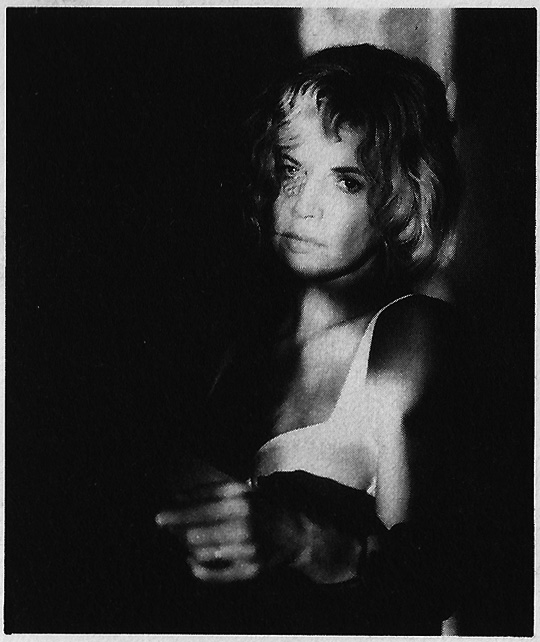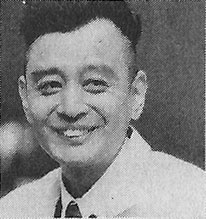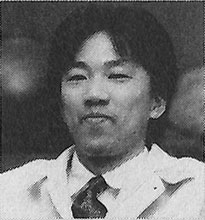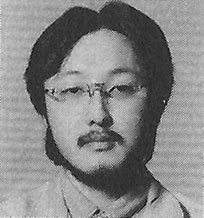
INTERVIEW: When Samus Was Naked
1994 (Original MDb Publish Date: 12.24.09)
This interview appeared in the official Japanese strategy guide to Super Metroid published by Nintendo. In this MDb exclusive, the entire interview was translated by CapCom from scans graciously provided from the private collection of VGMStudios. Reading this was like opening a treasure chest from the past. The Super Metroid development team reveals many astonishing insights into the series that have never before been available in English. Please sit back and enjoy. (To view the original scans, please visit the Super Metroid Library page.)
The master ROM has been completed for about one month. The development staff who gave Samus life and created Planet Zebes tells us about Samus’s true appearance…
NOBODY WANTED TO FUSS OVER A DIFFICULT DESIGN
Truly, thank you very much for your hard work. First, what makes you enthusiastic for Super Metroid and the Metroid series?
Sakamoto: I don’t mean to say I was involved with the whole series. For the Game Boy version, the staff was a little different. However, everyone now in Nintendo R&D1* who has made part of Metroid is dedicated to the series’ atmosphere and the style.
*Called Nintendo Development Department 1 in Japanese. In 2005, Satoru Iwata restructured Nintendo’s R&D departments under Entertainment Analysis and Development.
Was the style* original?
Sakamoto: Well, we were obsessed with it not becoming too obsolete. Naturally, people always will call a series that before it is finished.
*The original term – kara “color” refers to the tone, manner, and overall feel of the game.
What specifically gives it this style you talked about?
Sakamoto: I think the music and graphics, and even the system itself, makes it different from other types of games. It’s more complete than most action games, and above that it doesn’t require RPG elements, like a puzzle in Zelda.
If it didn’t resemble those kinds of games, was development difficult?
Sakamoto: Making it was fairly difficult. I think everyone wanted to avoid that kind of design.* However, I wanted to fuss over it.
*The original term, shisutemu or “system”, refers to the game’s overall design.
So this time you have a 24 Meg capacity?
Sakamoto: At first, we expected to use only half that capacity, but we put in some high quality music and graphics, so naturally, it expanded… No, we made it expand. (Laughs)
The programming workload and everything else must have also increased.
Sakamoto: Super Metroid was intended for both overseas and domestic audiences so required content that was completely the same. Because it’s an involving story, the overseas and Japanese versions would be different; it required 12 Megs for making each one, so 24 Megabits of content makes for one dense game.
With this story, this time it’s on the same planet – Zebes is the setting, isn’t it?
Sakamoto: This time I wanted to complete the Metroid series. Also, I wanted to bring back an old enemy. A nemesis would be revived, and for the sake of portraying an image of this showdown with Samus, this time it could only happen on Planet Zebes. This is what I thought. The battle between Samus and Mother Brain would come to an end. I wanted to show what happens at the end of Metroid.
Was it intended that the player would be nostalgic for the same planet and terrain played on the Famicom Disk System version?
Sakamoto: Although that game was eight years ago, I wanted to please those who got to play the FDS version who would investigate it and say, “They have the items from here…” I thought that also seeing an enemy character and saying, “Ah, I know this guy!” would be an enjoyable reunion.
SAKAMOTO’S WIFE WAS THE SHADOW DIRECTOR!?
Seems like it would have been difficult to coordinate the production of such a large map.
Sakamoto: We had a basis for judging the feeling of those who first played the game.
Osawa: We gradually became good at it.
Sakamoto: That’s right, we couldn’t get a proper judgment. Then, just before the game was complete, I brought it home and had my wife play it. That way, if there was any problem, I would see what direction to take. The next day, I would give directions for what I thought should be changed.
Osawa: I didn’t know that! (Laughs) So Mr. Sakamoto’s wife was behind the instructions to correct it!
Sakamoto: Well, I’m more that kind of guy. I also let my children play it.
So you were making adjustments up until the last moment.
Osawa: Everyone was keeping up spirits, and I was mostly like that.
Sakamoto: That’s wise!
Osawa: We were tense, couldn’t sleep, couldn’t go home, and couldn’t even take a bath. It stank! (Laughs) The work never ceased. The next day, we had to do it again.
Yamamoto: There weren’t even eight tatami mats in the break room for the programmers and designers to sleep on.*
Mori: The break room really stank! (Laughs)
Osawa: What? Mori-san, everyone used deodorant. Hey, you must have been silently protesting! (Laughs)
Sakamoto: Clearly, people were happy to sleep even in the smelly break room.
*A room the size of eight tatami mats is 12ft x 12ft – and this room was smaller than that. It was a very tiny room for the entire team to use.

First Meeting! Director Sakamoto’s Secret Storyboard 1
Must have been total carnage. How does this project compare with others?
Sakamoto: This time you can’t really compare it. We didn’t have anything for New Year’s, and we don’t release games until they’re in the best condition possible. Until then I did my best to make it the best game it could be.
Did the map change a lot?
Sakamoto: Finally in about January*, we decided on the map, but up until that point we were killing parts that weren’t working well.
Osawa: Hey, how many times did we do it? Run a meeting?** Was it about three times?
*Probably January 1994. The game was finished in February 1994, which is pretty amazing.
**Hashirouai, literally a ‘running meeting’.
Running a meeting? What do you mean?
Osawa: Those in the staff not familiar with the game had to run through it from start to finish.
Sakamoto: It was kind of a debug. Everyone could see the game. That way, everyone could watch an unskilled player play it.
Osawa: We went too far! (Laughs) Or to put it another way, it was our reference for making changes.
Sakamoto: Because if it could teach us, why wouldn’t we do it? If we compromise, two months of hell might become one month. I wanted to fix this problem, but maybe I didn’t. I had to make the puzzles shallow so as not to hurt someone who didn’t understand them.
About when did you start production?
Osawa: It was autumn about three years ago, right?* I think it took about a year and a half to finish the final version of the game.**
Sakamoto: Especially regarding content, I’ll miss the sense of volume of the game. It’s the only reason I’m still not happy with calling it an action game.
Osawa: If we changed just Samus’ jump ability, the entire map would be ruined.
Sakamoto: You can’t make something if you can’t firmly decide on something basic.
*Autumn of 1991
**Super Metroid would have been finished in February 1994. This means full production began around August 1992, making preproduction about one year and production one and a half years.
THEY WERE INSPIRED BY THEIR FAVORITE MOVIES
Incidentally, this time the opening cutscene, credits, etc. show considerable application of movie techniques.
Sakamoto: I like movies! That said, even though we didn’t directly imitate movies, we did use heads and bodies from movie techniques. So this way we had a cool cutscene that we wanted to resemble a movie.

First Meeting! Director Sakamoto’s Secret Storyboard 2
Were Japanese subtitles a ‘super’ idea?
Sakamoto: That was during the development phase.
Osawa: At any rate, that made it look like a movie.
Sakamoto: It’s funny, but Japanese players also say seeing the opening message in English is pretty cool. Something, when it’s written in English, has a warm atmosphere.
Let’s shift a little from talking about subtitles. There’s something there when you said you wanted it to look like a movie; was that your goal?
Osawa: What’s that?
Sakamoto: I was aiming for that! (Laughs) Really, I was just aiming for it.
I guess I’m talking about the image of Samus from films?
Sakamoto: Of course she’s a bit like Ripley from Aliens (Sigourney Weaver), but a little more extravagant.
SAMUS DIED COMPLETELY NAKED

Director Mr. Sakamoto got his image of Samus Aran from actress Kim Bassinger.
From the film The Getaway (CIC Picture Video 8 Month Rental)
(c) 1994 Victory Company of Japan, Ltd. All rights reserved.
Which person is the image closest to; was there someone specific?
Sakamoto: Personally, I like Kim Bassinger from 9 1/2 Weeks and My Stepmother is an Alien.
Osawa: Yeah, I see that. When Samus gets hit, her voice sounds like her.
What about when she dies?
Osawa: In the first phase of development, she was naked. You can see her naked for one frame. We put a bathing suit on her, but there was a subliminal effect for just an instant when you could see her naked for one frame.
Sakamoto: She was only naked for one second out of sixty minutes. However, when we stopped and thought about it for a moment, we had to stop because this sort of thing is terrible in America. (Laughs)

Samus’ Final Death Sequence in Super Metroid
Osawa: It was dangerous, but Yamane* put clothes on her.
Yamamoto: We used the voice more carefully. When she dies, Hamano did the voice, but it sounded too sexual so we couldn’t use it.
Hamano: When we sampled in front of the mic, I spoke a number of times. I wasn’t any good and completely failed.
Yamamoto: I have to say it was a failure. (Laughs)
Sakamoto: I have a special version of the ROM with that in there. (Laughs)
Osawa: Anyway, she’s naked and her voice is lewd. Furthermore, didn’t Yamane make an ending where she’s naked?
Yamane: That’s a lie! (Laughs)
Osawa: Yamane had a tough workload this time around. There were about three people drawing the map background, but Yamane touched up all of what those three people drew.
Sakamoto: For Maridia and Brinstar, he was in charge of each area, and made various polishings. Each one had its own personality. Yamane retouched them to give each a unique feel. I think he was able to get this result.
Osawa: Of course, didn’t he also unify the world by making it dirty?
*Some of the directors talk to their coworkers very familiarly, with just the last name, without the more formal “Mr.” or “-san”. By this point, the interviewees have begun to feel very informal.

The female staff drew SD Samus. In the realistic images of Samus, did she have a face like this!?
FUJIKO FUJIO TRANSFORMS INTO HINO HIDESHI!?
Huh? Made it dirty?
Mashimo: Apparently, the characters I drew were fairly cute. Characters like Crocomire were so charming that when they were killed, the player would feel sad about them.
Osawa: He wanted to them to look like Fujiko Fumio’s work! Then Yamane came into the picture.
Mashimo: When that happened, the characters became harsher so that the player could defeat them.
Osawa: Fujiko Fujio became Hino Hideshi!* (Laughs)
Sakamoto: Like Mother Brain!
Osawa: At first, I drew her. Then, I made the character look like an old lady living in my apartment complex. (Laughs)
Mashimo: I wanted to see a shopping bag hanging from her hands.
Osawa: Then Yamane-sensei appeared.
Mashimo: After that, saliva dribbled down, she spit out foul breath, and she was filthy.
Sakamoto: Well it wasn’t static as the rest was terrible, so we cut down on the amount of drool. Anyhow, in the final version, there was a moderate amount of drool. (Laughs)
*Fujiko Fujio was the two-person manga team behind Doraemon. HINO Hideshi is a famous horror manga artist.

First Meeting! Director Sakamoto’s Secret Storyboard 3
There are many places we haven’t seen before. What other secrets are there?
Osawa: You can beat Ridley when he appears in the Colony intro…
What!?
Sakamoto: You can do it if you shoot him a hundred times.
Yamamoto: Yes, and then the Metroid in the capsule will fall.
What else happens?
Osawa: It’s fun and I like to do it.
Sakamoto: Well, if you save the Dachora and Etecoons in the end, then the ending will be a little different.
As I haven’t seen this different ending, how has it changed?
Osawa: Please look carefully after you escape Zebes in your spaceship. I can’t say any more.

Save the Etecoons in the end and… Note where the arrow is pointing.
In the ending credits, a foreign name comes on screen. Who is Dan Owsen?
Yamamoto: Aah! It’s a harmless secret, but he is someone from NOA (Nintendo of America). He has come to Japan many times, and he talks with us. There’s a voice in the opening. He’s the person who did the voice.
Well, why didn’t you use a voice actor?
Yamamoto: Well. I’m just a salaryman! (Laughs)
A STORY TOLD WITHOUT WORDS
Where will the Metroid series go from here?
Sakamoto: I think the series is basically finished. Metroids were basically destined to be exterminated in the first place. So, I wanted to finish it in the most beautiful form.
So like that, it became the last one.
Sakamoto: It was kind of a gamble. From the beginning, it was decided that when the game begins, we wouldn’t tell the whole story using text. The story had to be told in a minimal way. However, it wouldn’t convey atmosphere. I thought the game’s atmosphere was done completely through sound. I thought it would be good if we could do it like a silent movie. It means that inside Samus’s helmet, she has a sober face. I wanted the player to think about that facial expression. Well, the culmination of that sort of thing was the final battle.
What will Samus do next?
Sakamoto: I can’t clearly say right now, but I think I want to make her the main character in an action game.
That would be great. I know you are busy today, so thank you very much for your time.
Now their effort and ideas surpass a big epic Hollywood movie. They poured their passion for game development into it. Energy swells from the forefront of these 17 professionals… You can feel their determination from their pictures.
Secrets of Samus Only I Know:
Super Metroid Staff Introduction
This is a profile of the 17 main staff members of Super Metroid. Names are listed family name first.
|
|
|
|
|
|
|
|
|
|
|
|
|
|
|
|
|
|
|
|
|
|
|
|
|
|
|
|
|
|
|
|
|
|

















